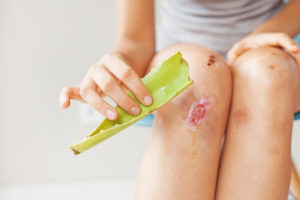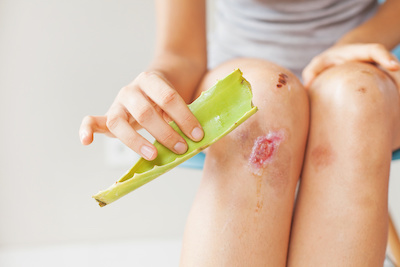Throughout history, compounds have been used from nature to assist with wound closure. As this study, published in the Journal of Medicinal Food, suggests, “despite the discovery of antimicrobial agents, antiseptics, and anti-inflammatory drugs, the wound closure process is challenging in the clinical setting of modern medicine.
“Plants and natural extracts that have been used in traditional medicine are considered as potential agents for the prevention and treatment of superficial lesions of the skin, and evidence of efficacy in the clinical setting is growing rapidly. In this context this review summarizes the evidence of such plant derivatives and their use in wound healing.”
ABSTRACT / Skin insult and damage start a complex healing process that involves a myriad of coordinated reactions at both the cellular and molecular level occurring simultaneously. These processes can be divided into that of cell migration and tissue remodeling of the wound. In addition, it is well known that deep wounds that derive from surgical procedures need a multidisciplinary approach to have a successful wound healing process.
Recently, there has been a renowned interest in the identification of active compounds derived 
It has been described that Malva sylvestris influences the formation of fibrosis-free granulation tissue in the skin. Recent observations suggest that Casearia sylvestris induces the angiogenic process. These effects have been evaluated in cell lines, different animal models, and some in randomized clinical trials. In this review researchers summarize the evidence of plant extracts and their active components (when known) in the acceleration of the wound closure process and tissue repair.
In this study you will learn:
1. The wound closure process involves several sequential steps that are triggered by vasoactive molecules.
2. Plants with Positive Effects in Wound Closure, including:
- Achillea millefolium
- Malva sylvestris
- Salvia sp
- Casearia sylvestris
3. Natural Extracts with Wound Healing Enhancing and Healing Properties, including:
- Propolis
- Aloe vera
Click Here for Full Text Study





